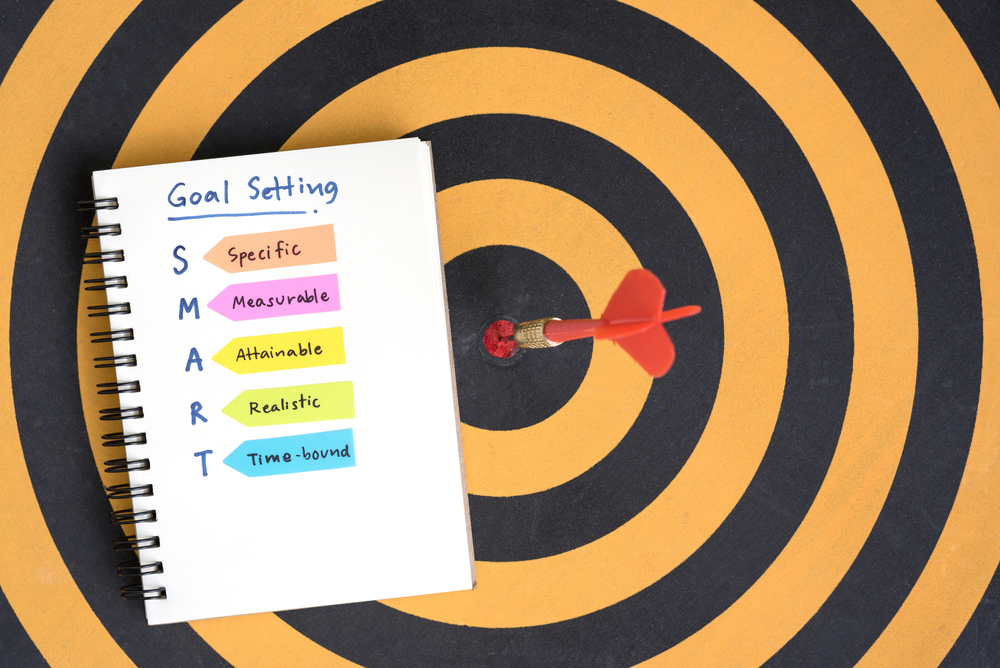
Goal Setting
It is true to say that although we all try and set goals and objectives for ourselves, not many of us set goals effectively. Some research has witnessed that only about 5% of people set effective goals. Various studies into sports performance as an example have shown that by setting goals effectively will improve performance. It is best to think of goals as building blocks to success. Goals or outcomes are vital for long term vision and short term motivation; for focusing your energy; setting a standard to measure yourself for improvement; providing a challenge or sense of purpose as well as a sense of achievement when the goal has been met. By setting goals will also help with raising a person’s confidence as they increase their competence.
So, how to set goals? Firstly, we need to take note of where we are now, what standard, what is it we want to achieve. Basically, starting out with a clean sheet of paper on the present state. By setting the goal or goals we are committing ourselves to a journey from where we are now to where we want to be. Think of it as the starting line in a race. There are many methods on how to set goals, the preferred and most common is the S.M.A.R.T criteria.
S = Specific: Think of your goal and make it specific. Score fifteen goals this season. I will contact my local sports centre and arrange work experience. Organise a charity fundraising event.
M= Measurable: Place a measurable benchmark against your goal, example I need to complete 90% of my tackles in rugby. I will gain 4 coaching qualifications in the next 6 months. I will gain my Paediatric First Aid qualification by March. You must have something to measure the success.
A = Achievable: Clearing the negativity and limited beliefs, you need to ask yourself by removing all limitations, is this goal achievable?
R = Realistic: The goal must be realistic. Be careful not to be pessimistic. What is realistic for the individual? Be certain that it can and will happen.
T: Timebound: When setting a goal, it is important to place a time constraint against it. Must be realistic time against the goal.
When setting your outcomes or goals, it is a good idea to write them down, remember it must be in a positive goal. Using psychology, set the goals using sensory based language. For example, what will you see, hear and feel when you have achieved your goal? The goals belong to the goal setter and only the goal setter. They must be self-initiated.
Goal setting is an extremely useful tool to ensure that we stayed focused and motivated. Long term injured sports people find their re-hab very tough going. By setting small realistic goals helps keep the mind focused and positive.
When thinking about our goals we all tend to set the goal far too far out. Think about the end goal and then work backwards setting smaller realistic goals.
The outcomes should be appropriately contextualised. For example, Where, when, how and with whom do you want to achieve this goal? If the goal is not put into any type of context we can start over generalising,
Our goals or effective goals should always maintain a secondary gain. Ask yourself, would I have to give up anything that you deemed important to have this outcome? Remembering that every behaviour has a positive intention. The secondary gain may mean a change in behavioural patterns for example.
How To Create an Effective Goal Setting Programme
Exercise One: Make a note of where you are today and where you want to be in 12 months. Now that you have a long-term vision, start to break it down into small outcomes. Using the S.M.A.R.T criteria (above) create an action plan for you to achieve your ultimate goal in 12 months time.
S = Specific:
M= Measurable:
A = Achievable:
R = Realistic:
T: Timebound:
Employability Skills – Unlock Your Potential
Developing Effective Listening Skills
Mental Rehearsal
Developing Your Presentation Skills
Developing Your Negotiation Skills
The Importance of Teamwork
Modelling Excellence
Written by Bob Humphreys, Master NLP Practitioner, ABNLP Certified
Bob has worked with professional sports people in the UK and Europe. He is a huge believer that the sports industry practices are similar to those in business. Both are competitive, require tactics, motivation, belief, teamwork, concentration, planning and excellent leadership skills to get the best out of a team.
Bob has now combined his experience in NLP and coaching to offer “soft skills” coaching to groups or individuals. He firmly believes that with the advancements of technology today, we are seeing signs of losing the human aspects with communication, social skills and human interaction. A truly passionate practitioner who likes nothing more than seeing a smile appear on faces.
Think 2 Win – www.think2win.net


